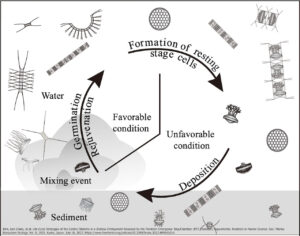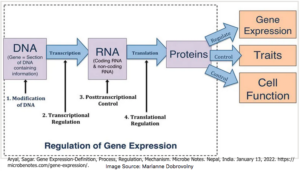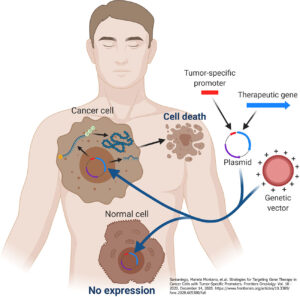Friday, June 09, 2023 – Offshore North Pacific Coast (Latitude: 40.13.806 N, Longitude: 124.25.222 W)
Gene Expressions

Several of the PUPCYCLE II scientists are analyzing the RNA of the single-celled organisms they are sampling off the northwest coast of the US. Their goal is to gain a better understanding of the molecular responses generated by the genes that are expressed when the phytoplankton are exposed to changes in their environment, such as an upwelling event. Upwelling events are sporadic and brief, usually lasting a few days. Phytoplankton must be ready to respond quickly to the influx of light and nutrients to capitalize on these flourishing environmental conditions. These responses are initially controlled by the expression of genes that control the amount of proteins produced.

Gene expression is not limited to phytoplankton. Any organism with DNA/RNA experiences the expression of the genes that are constantly being transcribed and coded by RNA. Our physical appearance; the color of our hair, the pigment of our skin are simply the expressions of the genes transcribed by our RNA. Our RNA also transcribes the genes that affect our health and well-being; that determine our risk for, or immunity from, various diseases. Genes can be transcribed to turn gene expressions “ON” or “OFF”. When codes are turned on, they are expressed. When gene codes are turned “OFF”, the expression of that gene stops. Scientists are still trying to understand all the possible triggers that cause our genetic codes to turn on or off.

Aging cells appears to be one of the triggers that change our physiology over time. As children, many of us had faces covered in freckles but as we grew older, the genetic codes for our youthful freckling pigments stopped expressing and the codes for “age spots” were turned on. Hair pigment codes in the “ON” position express the color of our hair. When our hair pigment codes turn off, our hair color is replaced with colorless strands of wisdom.
